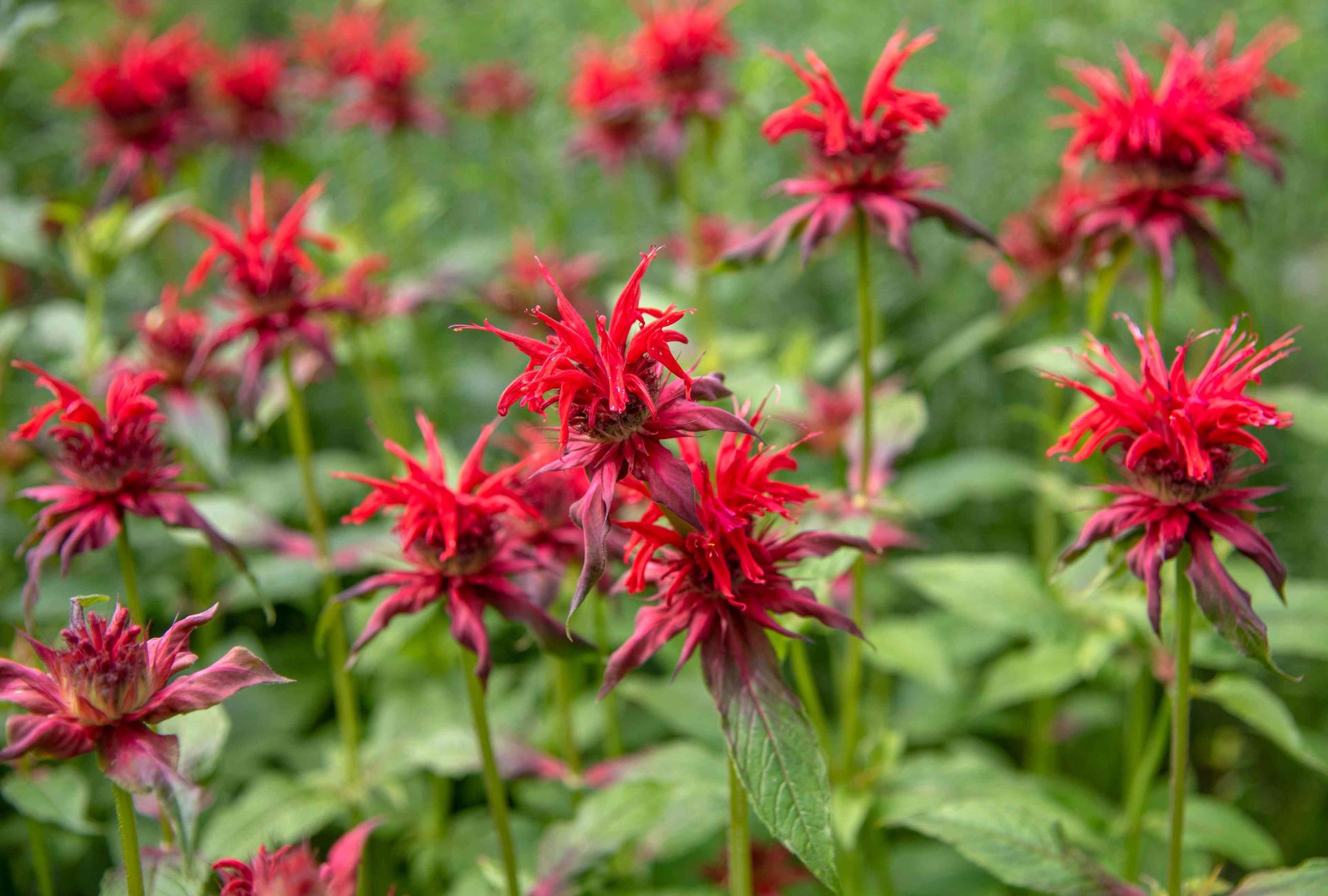White bee balm plants, with their captivating beauty and versatile uses, have long been cherished by gardeners and herbalists alike. This comprehensive guide delves into the world of these remarkable plants, exploring their characteristics, growth requirements, medicinal properties, culinary applications, and landscape design potential.
From their delicate white blooms to their aromatic foliage, white bee balm plants offer a captivating spectacle in any garden. Their ease of cultivation and adaptability make them a favorite among both novice and experienced gardeners. Dive into this guide to unlock the secrets of these versatile plants and discover their myriad benefits.
Plant Characteristics and Growth Requirements: White Bee Balm Plants

White bee balm, scientifically known as Monarda didyma, is a herbaceous perennial native to eastern North America. It is a member of the mint family (Lamiaceae) and is closely related to other popular garden herbs such as oregano, thyme, and basil.
White bee balm plants typically grow to a height of 2-3 feet, with a spread of 1-2 feet. They have a bushy, upright growth habit with square stems and oppositely arranged leaves. The leaves are lance-shaped to ovate, with serrated margins and a slightly hairy texture. The foliage is a deep green color and may turn slightly reddish-purple in the fall.
The most striking feature of white bee balm plants is their showy flowers. The flowers are borne in dense, terminal clusters at the top of the stems. Each flower is about 1 inch long and has a two-lipped corolla with a white upper lip and a spotted purple lower lip. The flowers are highly attractive to bees, butterflies, and other pollinators.
Optimal Growing Conditions
White bee balm plants are relatively easy to grow and can thrive in a variety of conditions. They prefer full sun to partial shade and well-drained, moist soil. They are tolerant of a wide range of soil pH levels but prefer slightly acidic soil.
White bee balm plants are drought-tolerant but will flower best if they are watered regularly during hot, dry weather. They are also relatively cold-hardy and can tolerate temperatures as low as -20 degrees Fahrenheit.
Planting and Propagation
White bee balm plants can be easily propagated by seed or by division. Seeds can be sown directly in the garden in the spring or started indoors 6-8 weeks before the last frost. Division is best done in the spring or fall when the plants are not actively growing.
To divide a white bee balm plant, simply dig up the plant and divide the root ball into several smaller sections. Each section should have at least 3-4 stems. Replant the divisions in well-drained soil and water them well.
Medicinal and Culinary Uses

White bee balm plants have been traditionally used for centuries for their medicinal properties. The leaves and flowers contain various compounds, including volatile oils, flavonoids, and phenolic acids, which are believed to contribute to their therapeutic effects.
Traditional Medicinal Uses
White bee balm has been used to treat a wide range of ailments, including:
- Inflammatory conditions, such as arthritis and sore throats
- Bacterial infections, such as wounds and skin infections
- Viral infections, such as colds and flu
- Digestive issues, such as indigestion and diarrhea
- Stress and anxiety
Modern Medicinal Uses
Modern research has confirmed some of the traditional uses of white bee balm. Studies have shown that it has anti-inflammatory, antibacterial, and antiviral properties. It is also thought to have antioxidant and immune-boosting effects.
Culinary Applications, White bee balm plants
White bee balm plants are also edible. The leaves and flowers can be used in teas, salads, and other dishes. They have a slightly minty flavor with a hint of sweetness.
Here are some ideas for incorporating white bee balm into your diet:
- Add fresh leaves to salads or sandwiches
- Make a tea by steeping the leaves in hot water
- Use the flowers as a garnish for desserts or drinks
Landscape Design and Companion Planting
White bee balm plants are versatile additions to any landscape design, offering both aesthetic appeal and ecological benefits. Their tall, upright habit and showy flower spikes make them ideal for creating vertical accents and adding a touch of color to borders, meadows, and cottage gardens.
When incorporating white bee balm plants into your landscape, consider their size and shape. These plants typically reach heights of 2-4 feet and spread 1-2 feet wide. Their upright growth habit makes them suitable for planting in groups or rows to create a striking visual effect.
The flowering period of white bee balm plants extends from mid-summer to early fall, providing a long-lasting source of nectar for pollinators. Their attractive flowers are a magnet for butterflies, bees, and hummingbirds, making them a valuable addition to any pollinator garden.
Companion Planting
White bee balm plants pair well with a variety of companion plants, both aesthetically and functionally. Some suggested companion plants include:
- Salvia species: Salvia plants, such as purple sage and scarlet sage, complement white bee balm plants with their vibrant flower colors and similar blooming periods.
- Echinacea species: Coneflowers, like purple coneflower and white swan coneflower, provide a long-lasting source of nectar for pollinators and create a harmonious blend of colors in the garden.
- Yarrow: Yarrow plants, such as common yarrow and sneezewort, add a touch of texture and color to the garden while attracting beneficial insects.
By combining white bee balm plants with these companion plants, you can create a diverse and attractive landscape that supports a variety of wildlife and adds beauty to your outdoor space.